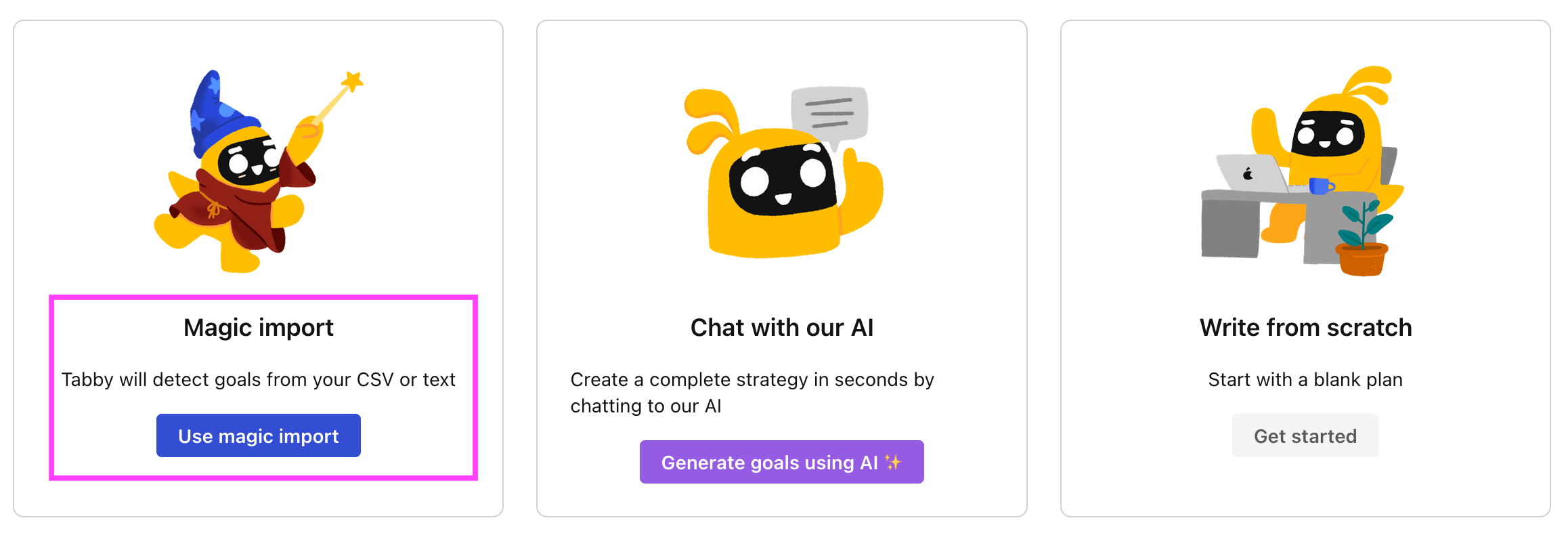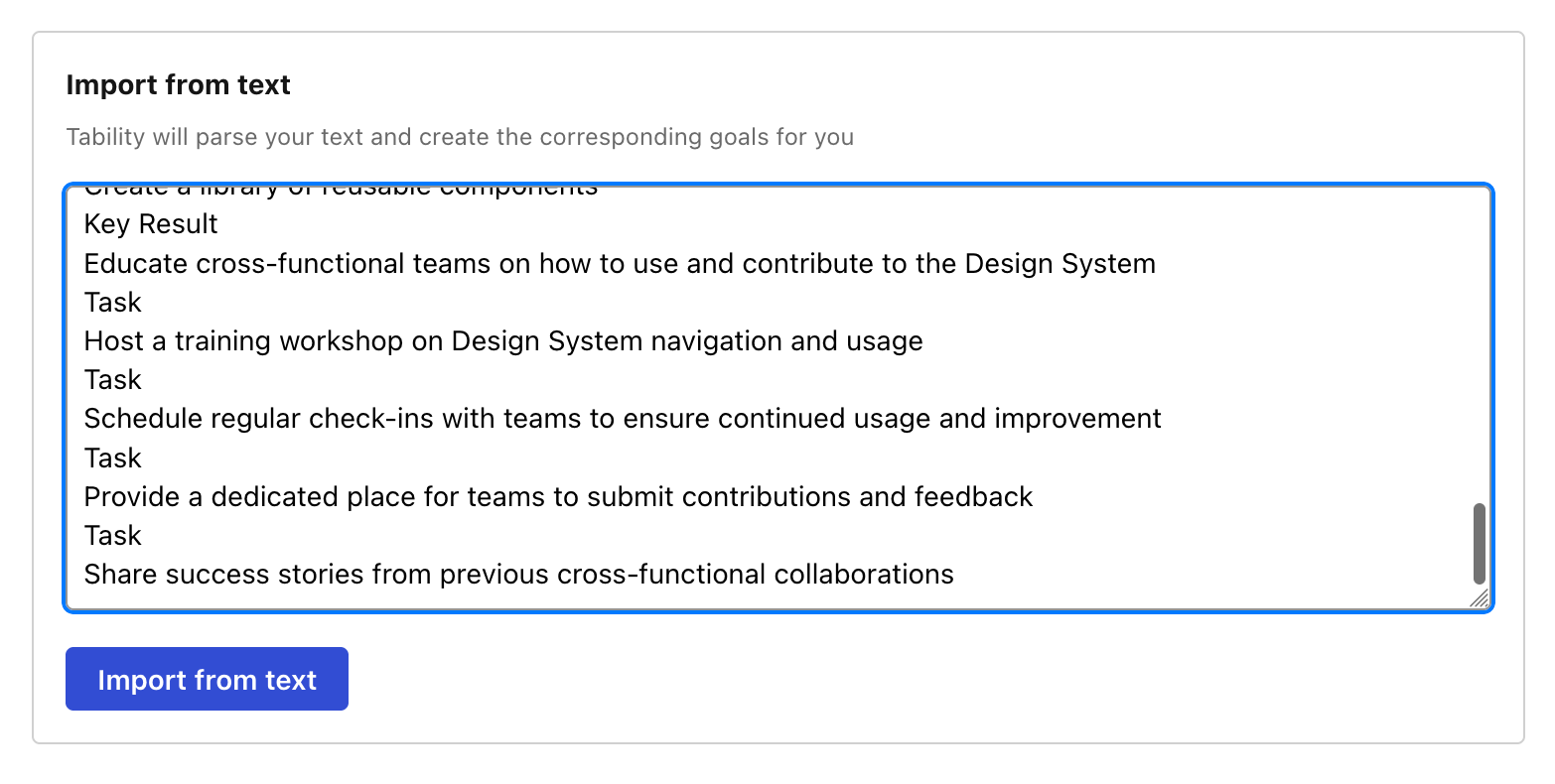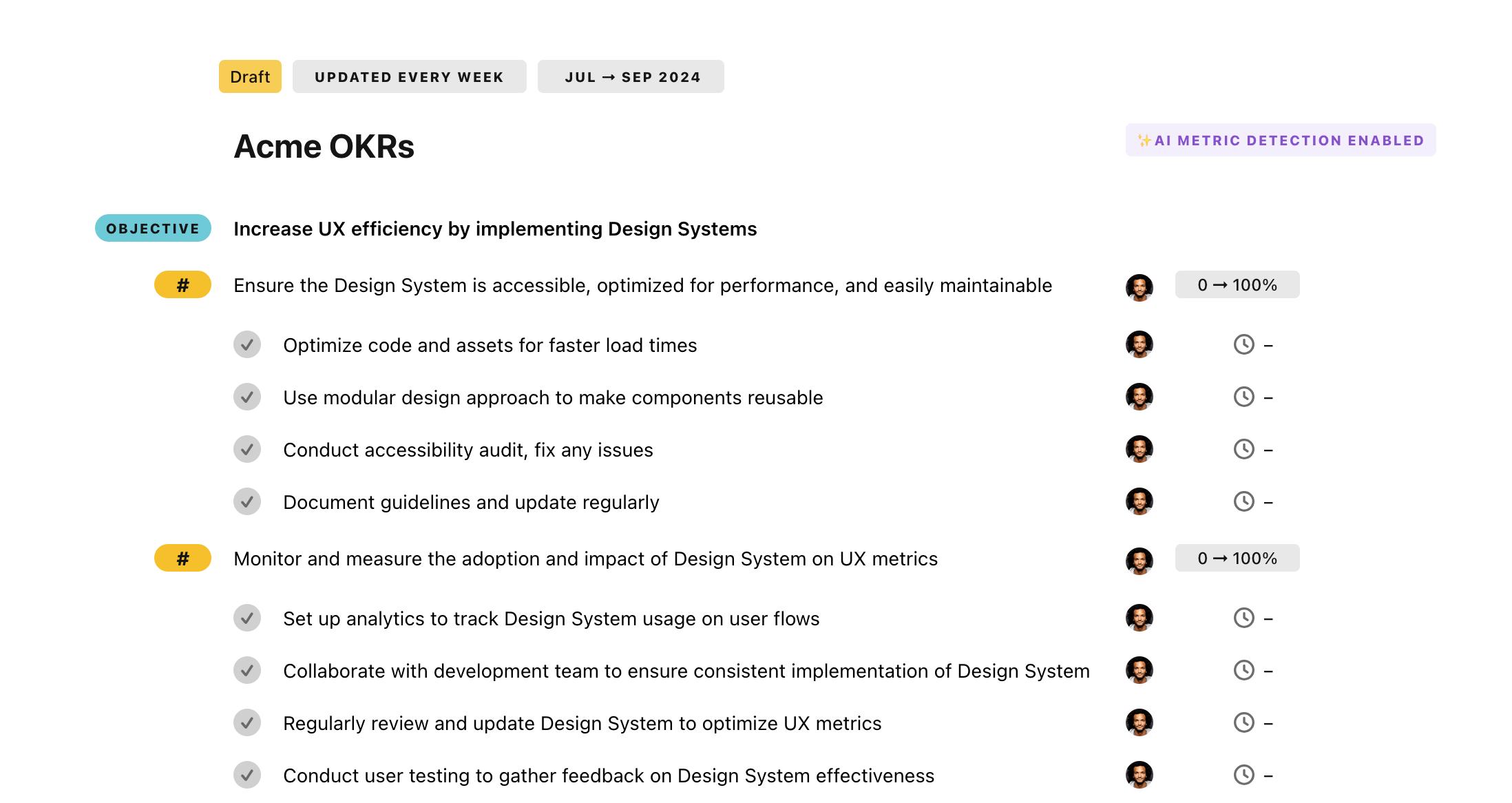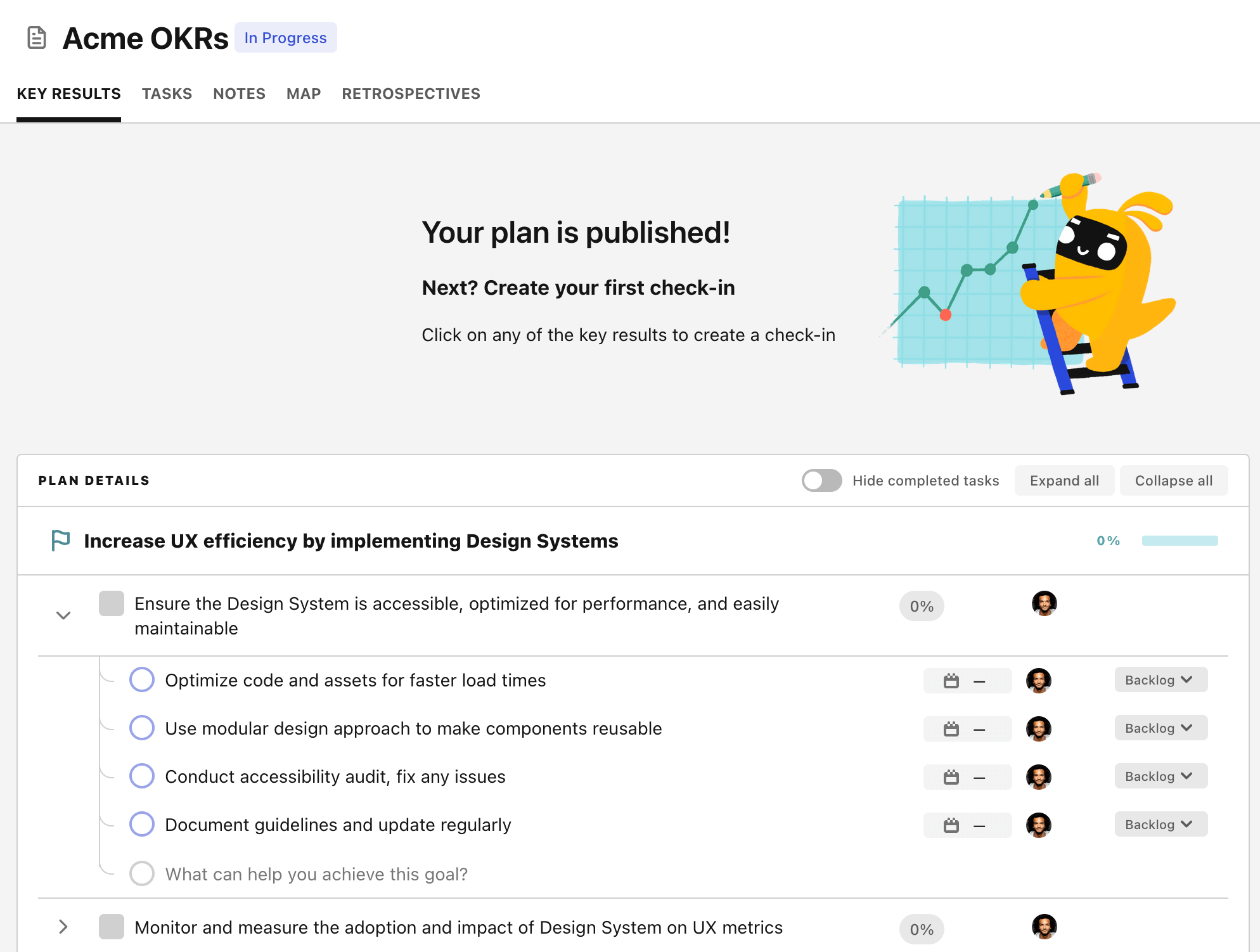OKR template to implement regulatory changes efficiently and economically
Your OKR template
The second objective is to design and release a detailed projected estimate of costs within four weeks. This involves releasing the projected cost estimate by week 4, designing a detailed cost estimate, and collecting all necessary data for projection creation.
The third objective is to successfully complete the regulatory adjustment without surpassing the allocated budget and time. Key initiatives include analyzing regulatory changes for potential financial impacts, developing a comprehensive budget-friendly adjustment plan, and faithfully monitoring adherence to the plan and deadlines.
In summary, this OKR seeks to ensure an orderly approach to implementing regulatory changes, involving cost projections, team formation, and diligent execution to avoid unforeseen expenses and confusion.
ObjectiveImplement regulatory changes efficiently and economically
KRForm a dedicated team to manage and expedite the changes by end of week 2
Identify individuals with the needed skills and availability
Assign roles based on competencies and workload
Establish a clear timeline and objectives for the team
KRDesign and release a detailed projected estimate of costs within week 4
Release the projected cost estimate by week 4
Design a detailed cost estimate
Collect all necessary data for projection creation
KRSuccessfully complete regulatory adjustment without surpassing the allocated budget and time
Analyze regulatory changes for potential financial impacts
Develop a comprehensive, budget-friendly adjustment plan
Monitor adherence to plan and deadlines
How to edit and track OKRs with Tability
You'll probably want to edit the examples in this post, and Tability is the perfect tool for it.
Tability is an AI-powered platform that helps teams set better goals, monitor execution, and get help to achieve their objectives faster.
With Tability you can:
- Use AI to draft a complete set of OKRs in seconds
- Connect your OKRs and team goals to your project
- Automate reporting with integrations and built-in dashboard
Instead of having to copy the content of the OKR examples in a doc or spreadsheet, you can use Tability’s magic importer to start using any of the examples in this page.
The import process can be done in seconds, allowing you to edit OKRs directly in a platform that knows how to manage and track goals.
Step 1. Sign up for a free Tability account
Go tohttps://tability.app/signup and create your account (it's free!)
Step 2. Create a plan
Follow the steps after your onboarding to create your first plan, you should get to a page that looks like the picture below.

Step 3. Use the magic importer
Click on Use magic import to open up the Magic Import modal.
Now, go back to the OKR examples, and click on Copy on the example that you’d like to use.

Paste the content in the text import section. Don’t worry about the formatting, Tability’s AI will be able to parse it!

Now, just click on Import from text and let the magic happen.

Once your example is in the plan editor, you will be able to:
- Edit the objectives, key results, and tasks
- Click on the target 0 → 100% to set better target
- Use the tips and the AI to refine your goals
Step 4. Publish your plan
Once you’re done editing, you can publish your plan to switch to the goal-tracking mode.

From there you will have access to all the features that will help you and your team save hours with OKR reporting.
- 10+ built-in dashboards to visualise progress on your goals
- Weekly reminders, data connectors, and smart notifications
- 9 views to map OKRs to strategic projects
- Strategy map to align teams at scale